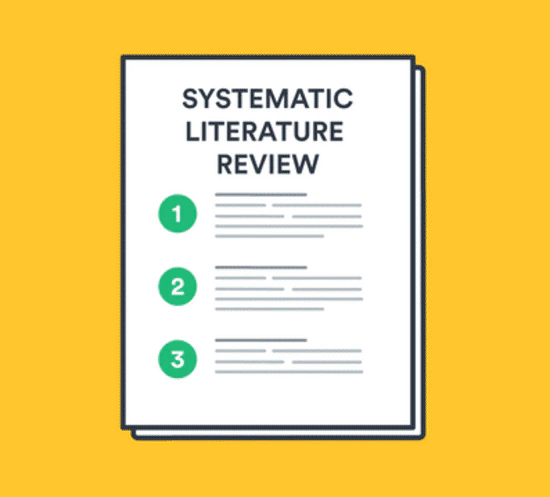Thesis Projects
Topics
*

A systematic literature review on (multi-method) recommender systems evaluation
Idea
Recommender systems aim to mitigate the inherent choice overload problem in today’s digital world by providing personalized recommendations of items to users. These recommendations are computed based on previous user behavior (e.g., implicit feedback such as items purchased, viewed, or listened to or explicit feedback such as ratings for an item). To this end, recommender systems research has primarily focused on improving the prediction accuracy of recommendation algorithms. However, recently, we have observed a shift towards more user-centric evaluation methods as accuracy-driven development and advancement of recommender systems have not been able to capture all aspects relevant to a user’s satisfaction with a given recommender system. Kaminskas and Bridge find that the focus of recommender systems has shifted to also include a broader range of ‘‘beyond accuracy’’ objectives to be evaluated.
In this master thesis, we aim to perform a systematic literature review on evaluation methods for recommender systems. We are particularly interested in getting a deeper understanding of multi-method (or mixed-method) evaluation approaches that combine evaluation strategies to gain a more profound understanding of user satisfaction.

Comparative analysis of similarity and diversity metrics for recommender systems
Idea
Similarity and diversity are essential for recommender systems, as they help predict items a user may like. Research has come up with a broad portfolio of similarity and diversity metrics. The core of this project is to perform a comparative analysis of such metrics. The idea is to run computational experiments (offline study) and analyze how congruent (or different) the indications for similarity or diversity are for a set of metrics.

Context in music recommender systems
Idea
This topic should give an overview on what context elements are considered in research on music recommenders (as ingredient to the algorithms). Recommender systems that use context information other than the combination of item and user, are referred to as context-aware recommender systems. Yet, note, in the papers themselves, the authors do not necessarily call those context-aware. The goal is to identify research gaps (e.g., demographics and time are frequently researched on, while country information or location are rarely used, etc.).

Diurnal fluctuations in musical preference
Idea
Diurnal patterns guide our everyday life. The basic idea of this thesis project is to analyze listening logs (from online streaming services) for diurnal patterns.
Relevant references:
- Minsu Park, Jennifer Thom, Sarah Mennicken, Henriette Cramer, and Michael Macy. Global music streaming data reveal diurnal and seasonal patterns of affective preference. Nat Hum Behav 3, 230–236 (2019). https://doi.org/10.1038/s41562-018-0508-z
- Ole Adrian Heggli, Jan Stupacher, and Peter Vuust. “Diurnal fluctuations in musical preference.” Royal Society open science 8.11 (2021): Art No 210885. https://doi.org/10.1098/rsos.210885
Potentially relevant datasets:

Metrics to measure the fairness of music recommender approaches from the perspective of artists
Idea
What metrics help measure the fairness of music recommender approaches from the perspective of artists (item providers)? There is literature on fairness metrics, frequently targeting the user perspective. What about the item provider’s perspective?

Nudging strategies that can be integrated into recommender systems
Idea
Recommender systems help to filter the tremendous amount of content available. The user can then choose from the filtered content, typically presented as an ordered list. How and where—and if at all—content is presented may influence a user’s decision on what to select. It may even drive the user to abandon the offer and potentially switch to a competitor. Nudging is a strategy to subtly guide a user in the selection process. How can nudging be integrated into recommender systems? What is already widely integrated, and what strategies have not yet been leveraged in typical recommender systems?

System characteristics that make a consumer perceive it ‘intelligent’
Idea
Many systems and applications are called “intelligent” or “smart”. Other systems and applications are not. The expert’s definition of intelligent or smart systems or applications does not always match the common public’s understanding. This project aims to investigate which system characteristics make consumers perceive a system or application as “intelligent”.

The artists’ perspective on music recommender systems
Idea
Music recommender systems are used in streaming services (e.g., Spotify, YouTube); they recommend music to users based on their musical taste, listening activity, or mood. Some examples of recommender systems are automatic playlist generation (e.g., Spotify’s personalized ‘Discover Weekly’ or unpersonalized ‘Popular Music from the 90s’), suggestions to add tracks to an existing playlist, or artists suggested based on your previous listening behavior. This project aims to identify potential problems that affect artists and draw on your ideas about how you would like future recommender systems to work.

The influence of music recommender systems on the diversity of music consumed
Idea
Music recommender systems are integral to popular music platforms, such as Spotify, Pandora, and YouTube. Recommender systems help to filter the tremendous amount of content available, and - with it - they also influence to a certain degree what kind of content users consume. The central question of this project is: How do music recommender systems influence the diversity of the music items consumed? Subquestions that have to be dealt with:

The perception of diversity in a set or sequence of recommendations (e.g., in news recommendation)
Idea
Research has found that good sequences of recommendations have a certain degree of diversity in the recommended items. For some domains, diversity is even more critical than for others. The music domain is an example: Having a playlist recommended with songs of just one artist might be boring for some users; having a playlist with the same song interpreted by different artists is also (in most cases) not what users are looking for. Diversity is needed.
Yet, what is perceived as diverse is subjective.
This research aims to find what variables influence whether a sequence of recommendations is perceived as diverse or not (or to what degree).
A related question is: What are the essential aspects that have to be considered by algorithms to create a sequence of recommendations that is perceived as diverse?

User behavior types of music playlist creation: How do users create music playlists on music streaming services?
Idea
Today’s music streaming services (e.g., Spotify, Deezer) allow users to create music playlists. Little is known about how users approach and accomplish this playlist-creation task. Previous research indicates that users employ different strategies to create playlists. The goal is to explore and capture users’ (different) strategies and processes to craft their playlists. Specific aspects include a user’s search strategy and the use of automatic recommendations in the playlist creation process. Particular attention should be paid to using other user interface (UI) elements and functionalities—either in the elements’ intended way or as a workaround. The outcome should be (i) a typology of user behavior of music playlist creation and (ii) derived design implications to support music playlist creation (if possible, for the different user types).

Validation of similarity and diversity metrics in a user study
Idea
Similarity and diversity are essential ingredients of recommender systems. Based on such metrics, similar items may be recommended to users (“more of the same”). Or a portfolio might be diversified to prevent having an overly similar set of items.
Research has come up with a wide portfolio of similarity and diversity metrics that are used in so-called offline studies (purely computational). The goal of this project to validate existing metrics in a user study.

What do professional musicians or music students consider when creating/organizing music playlists?
Idea
Many music professionals create their playlists (e.g., on music streaming platforms such as Spotify or Pandora or in their music software) for various professional purposes—e.g., for teaching music students, learning to play/sing new songs, creating playlists for events, etc.
The guiding research question is: What do professional musicians or music students consider when creating/organizing a playlist?
The goal of the project is to find out what aspects are important when creating and organizing a playlist - important from the music professionals’ perspective.
Ultimately, these findings can be used to develop playlist recommenders or music continuation approaches (e.g., when you start with one or several music items and then the playlist is automatically continued) that consider those aspects.
The results might differ significantly from what a typical consumer may consider important.
Systematic Literature Review topics
(for Bachelor thesis projects)
